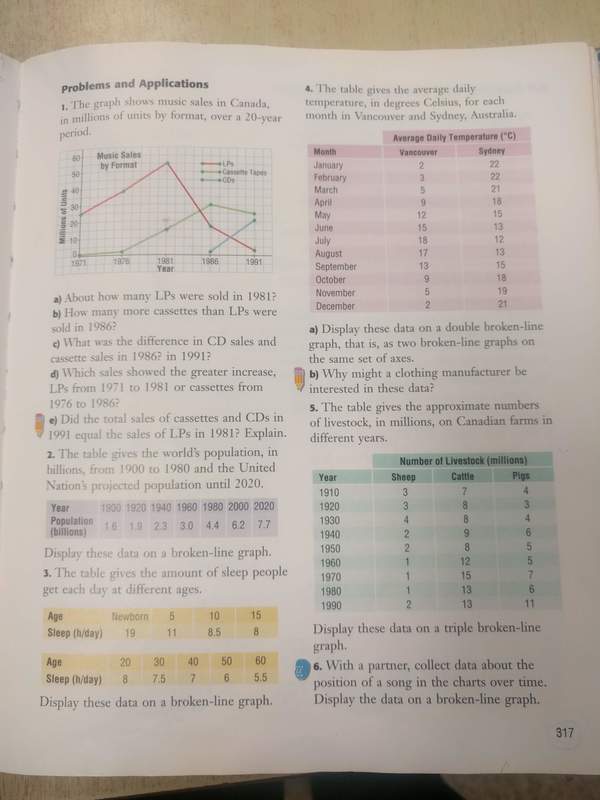1.6-1.7 Study Guide. Math 8/Algebra 1 calendar. Go math online materials. Illuminate Tests. A list of all math targets/outcomes includes the following: (A1, A2, A3, B1, C1, C2, C3, D1, E1, E2, F2 and F3 ) and is available below in printed form below (see grade 8 mathematics targets.docx). Students are asked to keep all assessments in their binders for future reference/review.
I created my 'newsletter' Algebra Connections to give students the organized notes that I talk about in class. Click here for more information about these handouts. Please click on the RSS-Feed icon on the right to subscribe to my podcast - receive 1 newsletter about basic math/algebra skills each week - FREE!
Divisibility Rules. Recognizing when a number is divisible by 2, 3, 4, 5, 6, 7, 8, 9, and 10 without a calculator is important -- it prepares us to work with fractions, common denominators, lowest common multiples, and factoring. There are patterns in numbers. (Click HERE for printable, .pdf version)
Main Factors of Factoring. In many ways, algebra is all about taking numbers and expressions apart and then putting them back together in simpler forms. Multiplication tells us that 2*3=6. Factor is the reverse -- 2 factors of 9 are 2 and 3. (Click HERE for printable, .pdf version)
Decimals and Percents. These math skills are critical to student success in most ALL academic classes at UW-W. Our text has a Review Chapter the reinforces these skills, but I wanted to give my students a little bit more. (Click HERE for printable, .pdf version)
Percents. Here is a more detailed review of an important concept, percentages. Rate, base, and percentage are reviewed along with some examples of practical applications. (Click HERE for printable, .pdf version)

Fractions 101Working with fractions is an important part of many classes -- it is also the foundation of many algebraic concepts. Here are the basics. (Click HERE for printable, .pdf version)
Different Views, Same Concepts: LCM & LCD. Sometimes, looking at alternative perspectives is the best way to learn, Here are two ways to look at the same concept -- lowest common multiple and lowest common denominator. (Click HERE for printable, .pdf version)

Fractions: OperationsAdding, subtracting, multiplying, and dividing fractions all represent important skills. Here's a quick review along with more Web resources to review these concepts. (Click HERE for printable, .pdf version)
[ Top ]
Properties of Real Numbers. Here is a review of different types of number sets, properties of real numbers, and the order of operations. Does MS Excel understand the order of operations? Let's find out! (Click HERE for printable, .pdf version)
Negative Numbers. This handout reviews properties of negative numbers and rules of addition, subtraction, multiplication, and division. There are also some suggested Websites for additional help. (Click HERE for printable, .pdf version)
Simplifying Expressions. Combining like terms is the basis of much of algebra. Here is a short review, with examples. It includes online resources to practice problems, an equation calculator, and a combining like terms calculator. (Click HERE for printable, .pdf version)

Formulas. Here are some geometric and other common formulas used to solve a variety of problems. (Click HERE for printable, .pdf version)
Problem Solving. Polya's strategy for solving problems is useful in virtually any context. This handout reviews how we can apply it to typical math and algebra problems. Many examples of translating words to numbers are presented. (Click HERE for printable, .pdf version)
Solving Linear Equations in 1 Variable. This handout reviews the basics of linear equations and the properties of algebra that are used to solve them. Several online resources are included. (Click HERE for printable, .pdf version)
Solving Inequalities. Working with expressions that are greater than, less than, equal to or greater than, or less than or greater than is the foundation of higher-level math courses. This handout compares and contrasts equations and inequalities and suggests some helpful Web resources. (Click HERE for printable, .pdf version)
[ Top ]
Exponents. This handout reviews exponent rules and provides Web resources for students for further study and practice. (Click HERE for printable, .pdf version)
Scientific Notation. Once we understand exponents, we should apply that understanding to scientific notation. This handout reviews that concept and procedures. Does MS Excel understand Scientific Notation? Let's find out. (Click HERE for printable, .pdf version)
Polynomials. The basics of polynomials and the different types are covered here. There are many online resources to direct students for additional information, reviews, and interactive tutorials. (Click HERE for printable, .pdf version)
Multiplying Polynomials. This handout reviews the basics of multiplying different types of polynomials. Building and understanding of these concepts provides a solid foundation for much of the rest of this class. (Click HERE for printable, .pdf version)
Dividing Polynomials. This is an important unit that ties polynomial basics, working with exponents, and operations with polynomials together. We start with the simplest case, dividing a polynomial by a monomial -- its really just a review of fractions and simplifying terms. Then, we look at long division, which sometimes called synthetic division. (Click HERE for printable, .pdf version)
GCF & Factoring Polynomials. Anytime we factor an expression, we start by looking for greatest common factors. Then, we look for ways to rewrite it as a product. (Click HERE for printable, .pdf version)
Factoring Polynomials. The reverse of multiplying polynomials is to write them as products, factoring. This is an important skill, it prepares us for working with quadratics and rational expressions. (Click HERE for printable, .pdf version)
[ Top ]
Factoring Trinomials in the Form x2+bx+c. Starting with the simplest case, let's look at the patterns that help us write trinomials as a product. (Click HERE for printable, .pdf version)
Factoring Trinomials in the Form ax2+bx+c.Now that we can factor trinomials that have a lead coefficient of 1 (x2+bx+c),lets look at how these patterns help us when working with polynomials with a lead coefficient other than 1. (Click HERE for printable, .pdf version)
Solving Quadratic Equations by Factoring. In many ways, everything we have done up to this point is to prepare us to look at mathematical expression of relationships. Quadratic equations can be used to model many 'real-word' problems. Let's look at one way to solve quadratic equations. (Click HERE for printable, .pdf version)
Rational Expressions. If we understand polynomials, rational expressions are not really new. A rational number is one that can be written as a quotient. Rational expressions are quotients of polynomials. (Click HERE for printable, .pdf version)
Multiplying & Dividing Rational Expressions. Here is where we start to tie everything together -- factoring the numerators and denominators (polynomials) of rational expressions allows us to cancel common factors, just like when we are working with simple fractions. (Click HERE for printable, .pdf version)
Adding & Subtracting Rational Expressions. This is really a review of LCD, factoring polynomials, and canceling common factors. Students that master this unit are well on their way for success in Algebra 41 and any other higher-level math class they choose to take. (Click HERE for printable, .pdf version)
Graphing. Here is a simple review of rectangular coordinate systems and graphing linear equations. (Click HERE for printable, .pdf version)
Lines, Equations, and Inequalities. Many believe that modeling and predicting with functions is the single most important concept in mathematics. This edition of Algebra Connections reviews graphing and working with linear equations and inequalities. (Click HERE for printable, .pdf version)
[ Top ]
AboutAlgebra Connections
I want students to succeed and I work hard to do what I can to support their studies. I have created these 'newsletters: to review fundamental algebraic concepts and procedures and to suggest online resources that might be useful in developing mastery of algebraic skills. Click HERE to see the comprehensive set of skill building links that my students use when they want online help.
At UW-Whitewater, students rent their books from the textbook rental center (paid for by student fees). While this save students large amounts of money, it does mean that they are not building collections of resources to help them in higher level classes. While students do take their mastery of Beginning Algebra with them to their next math class, I want to give them a little more.
Students tell me that Algebra Connections provides them with short, easy-to-read reviews of important concepts. Developmental Education classes are designed to provide a foundation for higher lever courses at UW-W. The 'core curriculum' of my algebra class is all here, along with suggestions for online resources that support each area we have reviewed.
I also give these handouts to students in the summer camps and college transition programs I work with. Many students learn best when the 'see the bigger picture (global learners). Not only does Algebra Connections accommodate different learning styles, but they allow students to get a 'head-start' on the course while developing a better self-understanding of their learning needs.
Perhaps most import of all, I hope that Algebra Connections shows students that I care about them and want to see them achieve their goals at UW-Whitewater.
[ Top ]
Christmas is the worst…

Mr. B's Weeblygrade 8 Mathematics Textbook
Every year my parents make us travel half way across the state and spend a few days with my annoying as shit cousins!
My cousin Rose is the worst!
She thinks she is this perfect little southern ‘lady’… But in truth she is just some spoiled bitch!
Her parents do everything for her and she has a no limit credit card courtesy of her father for any designer clothing she wants!
I promised myself that this year would be better, this year I would teach her a little bit about real life.
That’s why at around 2AM when everyone was asleep I snuck into Rose’s bedroom…
Mr. B's Weeblygrade 8 Mathematics Solutions
I had to cover her head with a pillow to muffle her scream but I managed to dump at least 4 loads deep into her belly that night!
The only thing that makes this annoying holiday season tolerable is pumping a baby into my not so willing spoiled bitch of a cousin!